Northern Thailand.
Attraction article by: Tom Stenshavn
The White Temple in Chiang Rai (Wat Rong Khun)
Little was known about Wat Rong Khun temple before it was left in the hands of Chalermchai Khositpipat, considered to be one of Thailand’s greatest modern artist. He took the mostly ruined temple 10 kilometers south of Chiang Rai and turned it into what is today the city’s most popular attraction. This is because Chalermchai Khositpipat is from Rong Khun village.
He studied at Bua Sai Primary school a short way away from the current temple’s site, before he went on to Bangkok’s Poh Chang Art School. From there it was a whirlwind of awards and exhibitions the world over until 1997 when work began on the Wat Rong Khun temple, funded by his art career. Over the years, the project would cost him more than $30 million of his own money.

There is good reason the temple doesn’t receive government funding like so many other Thailand tourist attractions; the imagery is to some kitschy and to others sacrilege. This controversy over style is nothing new to Chalermchai Khositpipat, who painted a punk rock Ronald Reagan and a ninja turtle into London’s Wat Buddhapadip. The White Temple contains figures from a lot of well-known characters like the cute Hello Kitty to the fiercer, The Predator and the Alien monster from the movies with the same names.
And, while much has been made of the interior design of Wat Rong Khun and the iconoclastic imagery on the interior, it is often forgotten that the White Temple remains one of the most visually compelling of the 30,000 temples in Thailand.
From the clasping white hands to the mirrors reflecting the bright Thailand sun from three-tiered arches as if they are shining stars during the day, Wat Rong Khun is a masterpiece of design.
And, as the most are concerned, the work will never really be finished, with projects scheduled through to 2070.
But what does it all symbolise?
Every detail of the white temple carries meaning and encourages the visitor to reflect on the Buddhist teachings that show the way to escape from the worldly temptations, desires and greed and focus on the mind instead.
The Ubosot, the main building of the white temple, is reached by walking across a bridge over a small lake. In front of the bridge is an area with hundreds of reaching hands that symbolize desire. This area represents human suffering and hell.
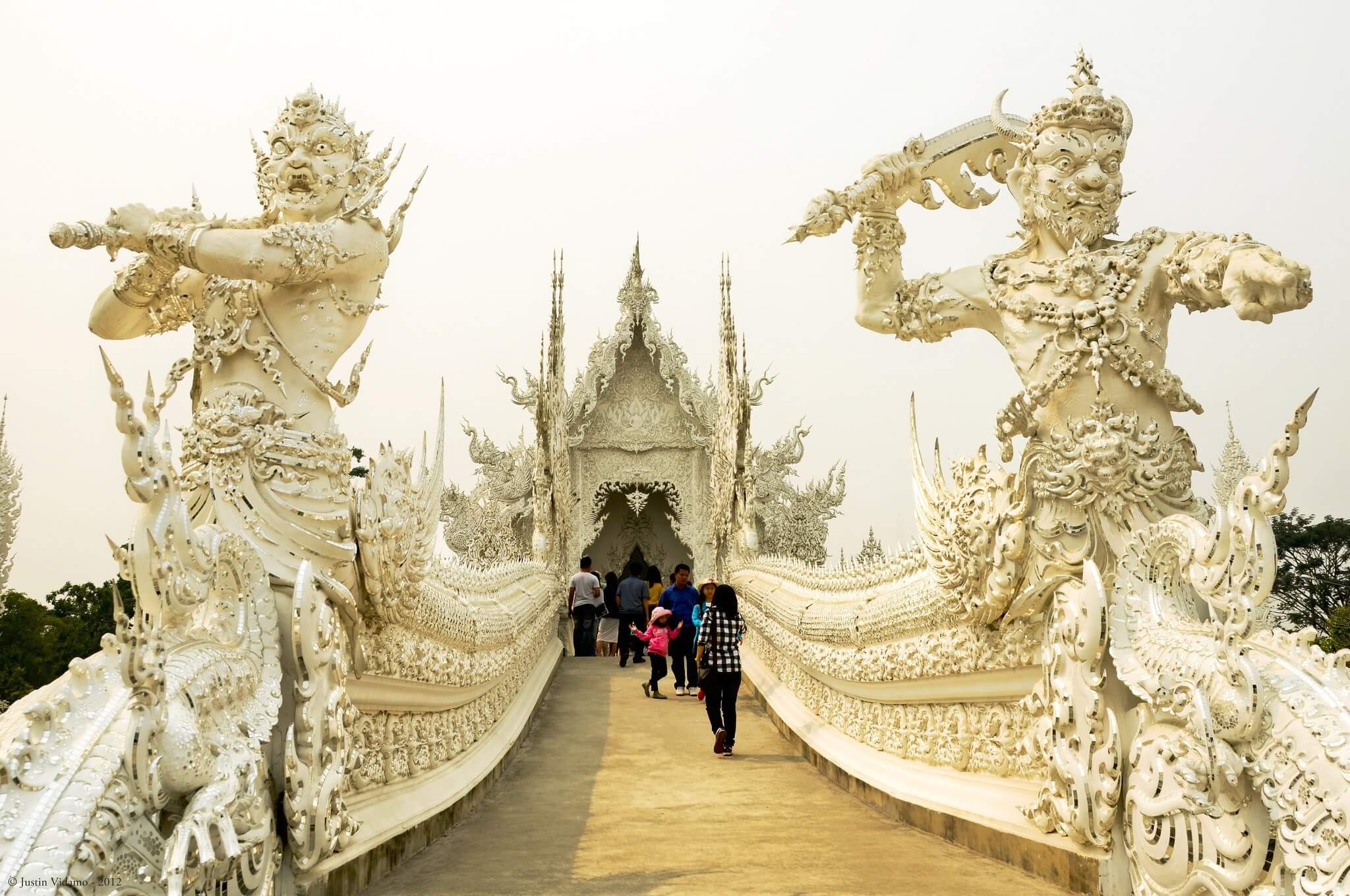
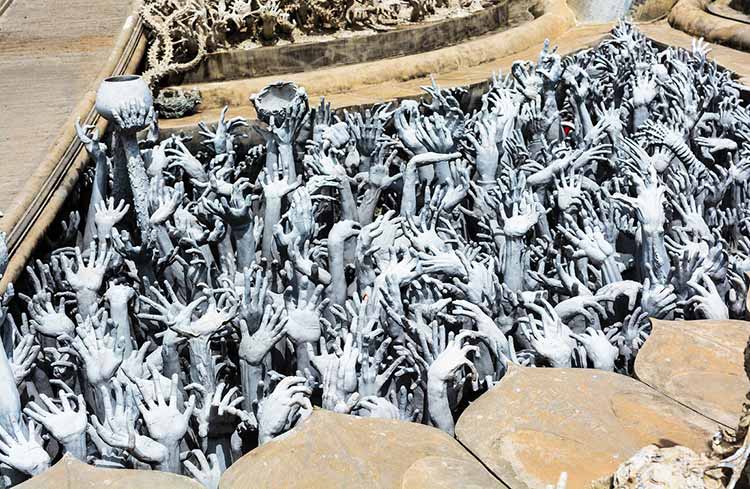
On the back wall of the Ubosot is a golden mural of the Buddha, a few images of the Buddha in front of it.
A structure that stands out because of its colour is the rest rooms building. I would like to call it the greatest toilet in Thailand. Another very ornately decorated structure as this golden building represents the body, whereas the white Ubosot represents the mind. The gold symbolizes how people focus on worldly desires and money. The golden building represents the idea to make merit and to focus on the mind, instead of material things and possession.
Another elaborately ornamented structure is the crematorium. This is where the deceased are cremated.
In Buddhism death is the transition from this life to the next, a cycle of death and rebirth that can only be ended by reaching enlightenment. After death a person is reborn into one of several states including human, animal, Heaven and Hell. The state he or she is reborn into is determined by the deceased’s good and bad actions in life and accumulated merit. The people attending the cremation are reminded of the temporary character of everything on earth, as opposed to the mind that lives forever.
Around the temple grounds are several concrete “trees” with thousands of medallions hanging down from them. For 30 Baht you can add yours with your name written on it.
Visitors of the temple make a wish throwing a few coins into the wishing well.
To get an impression of the tremendous amount of work done to build the white temple take a look in the large building behind the temple. In the hall staff apply handmade pieces of mosaic mirror to various parts before they get assembled onto a building.
Tom Stenshavn
stenshavn@gmail.com

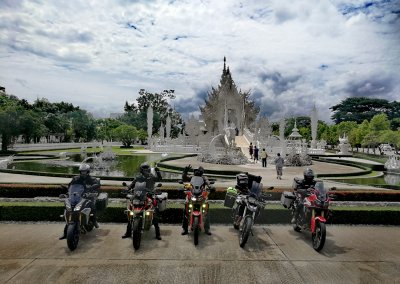
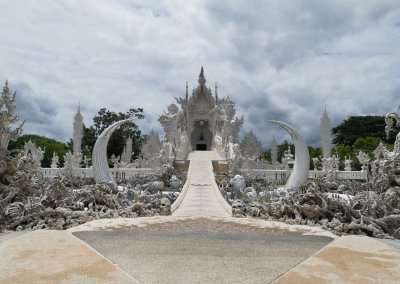
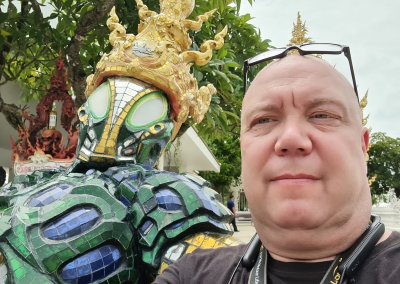
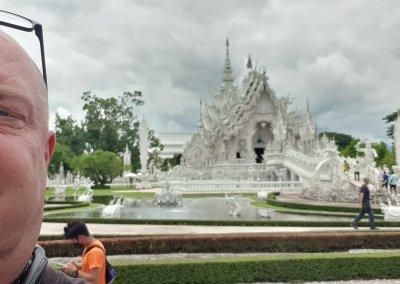
Recent Comments